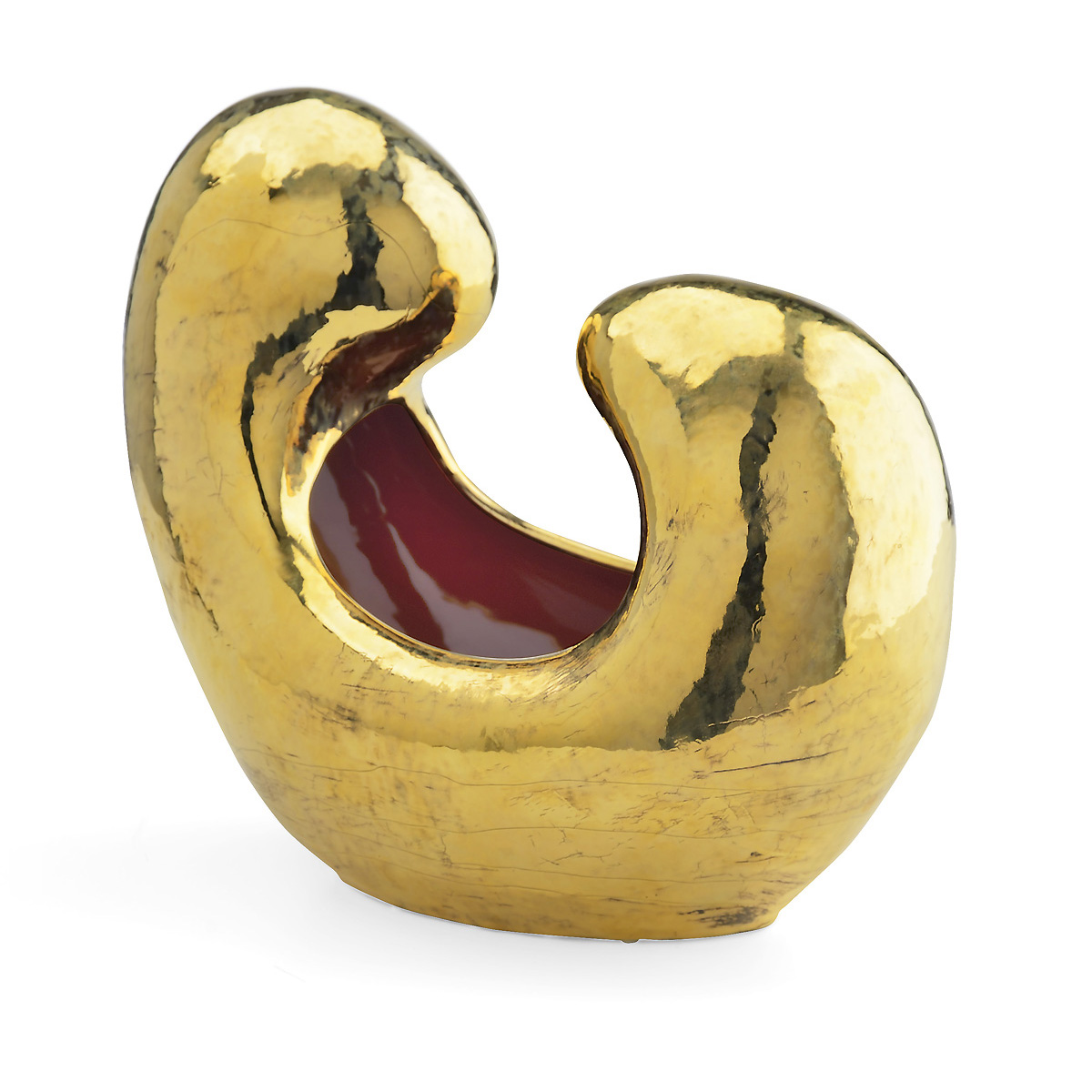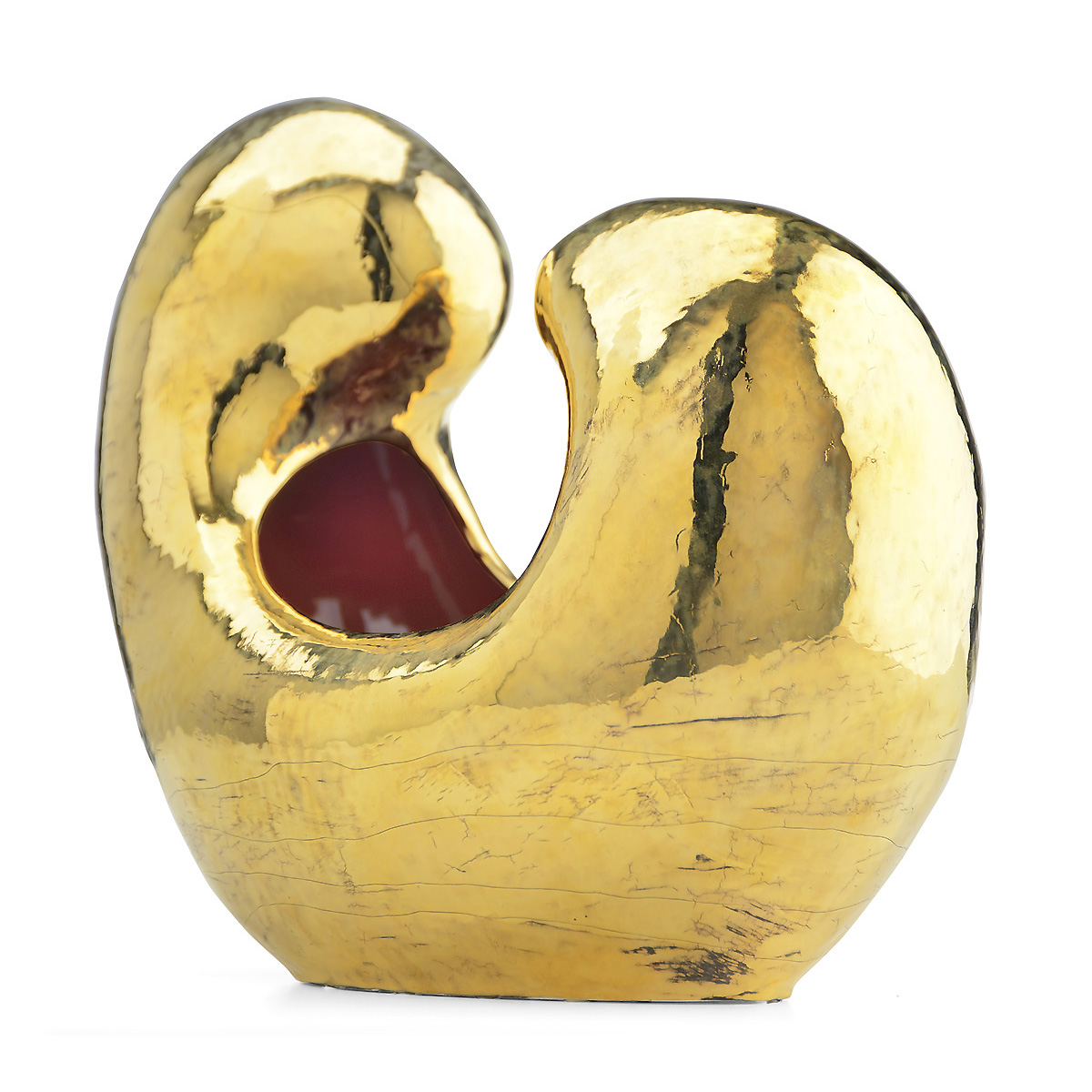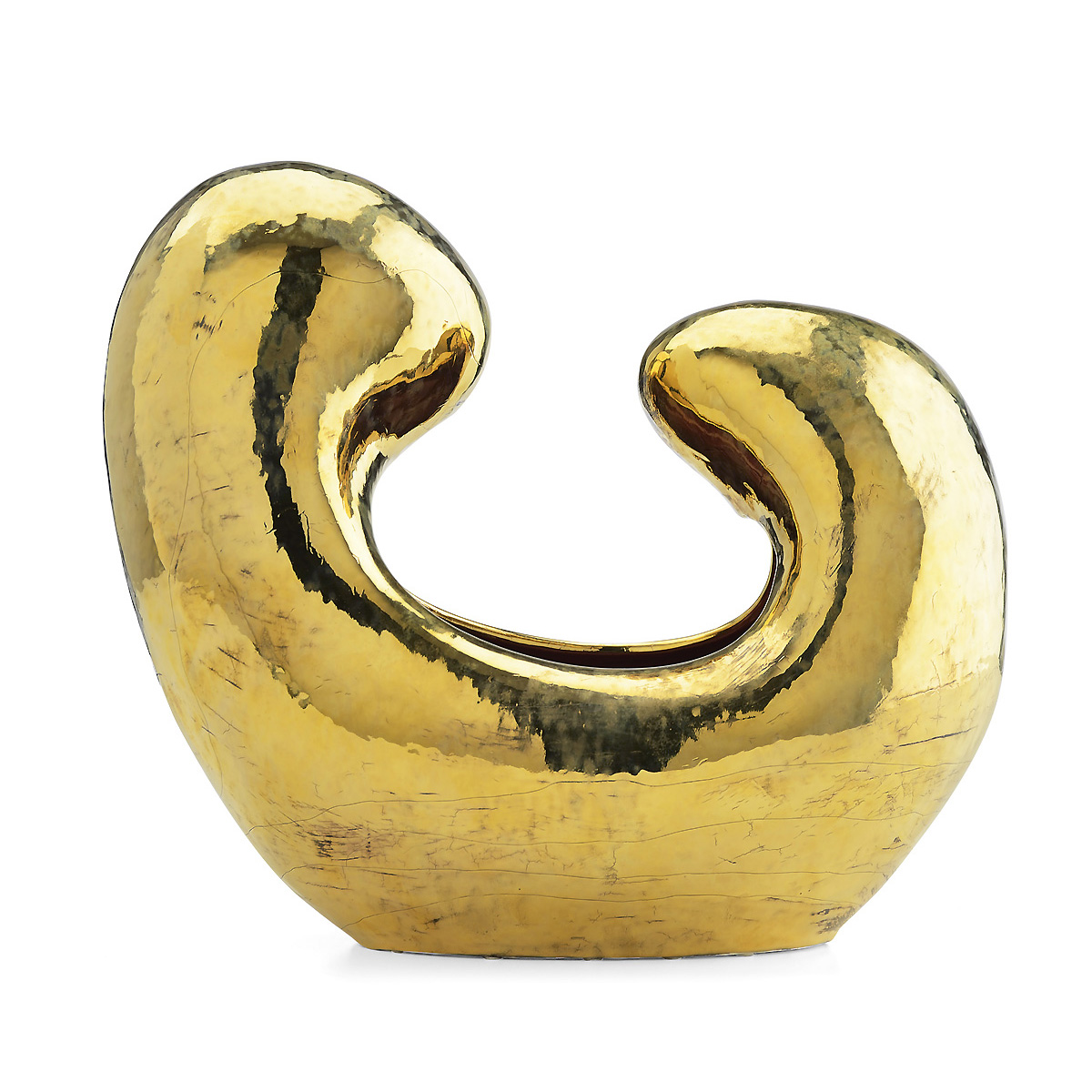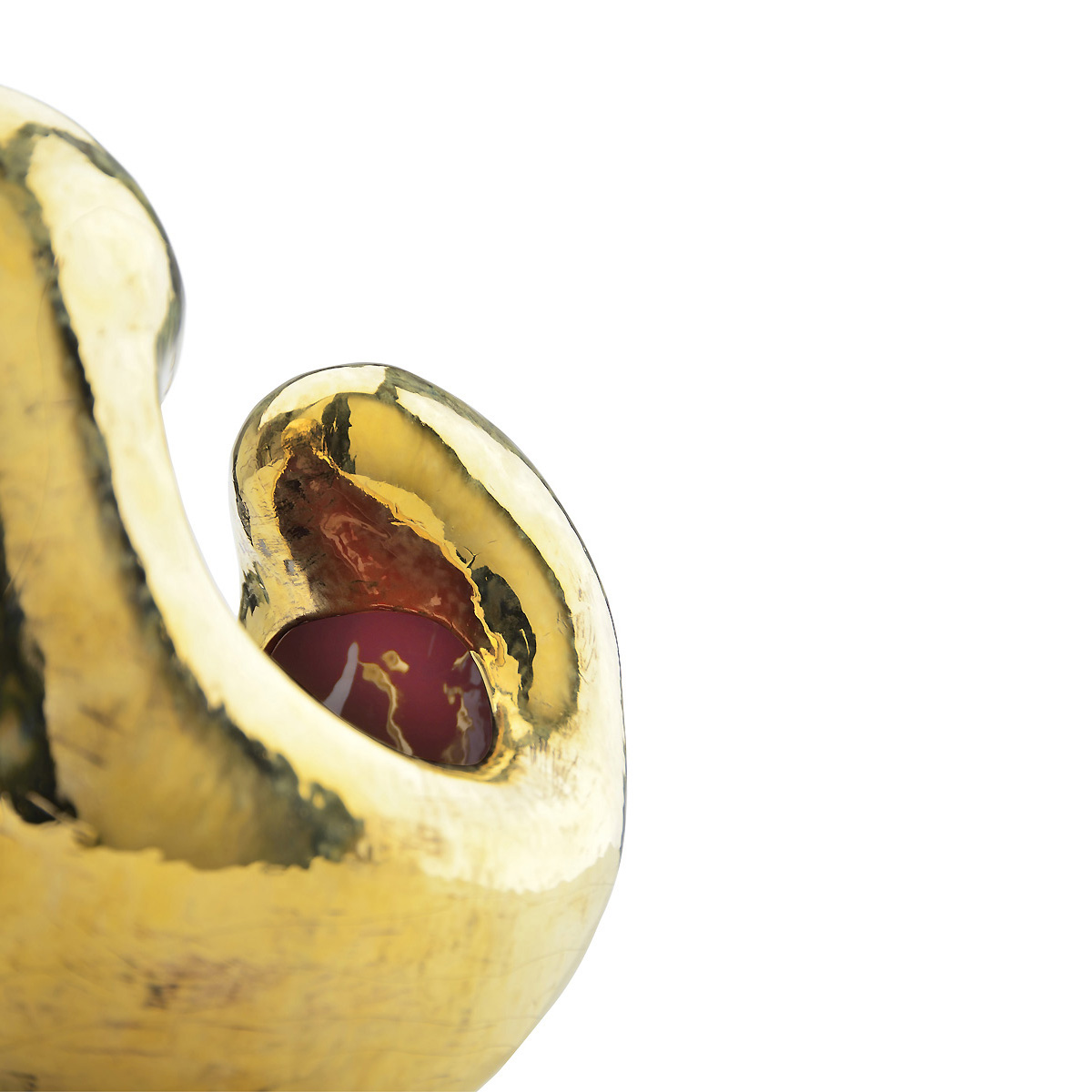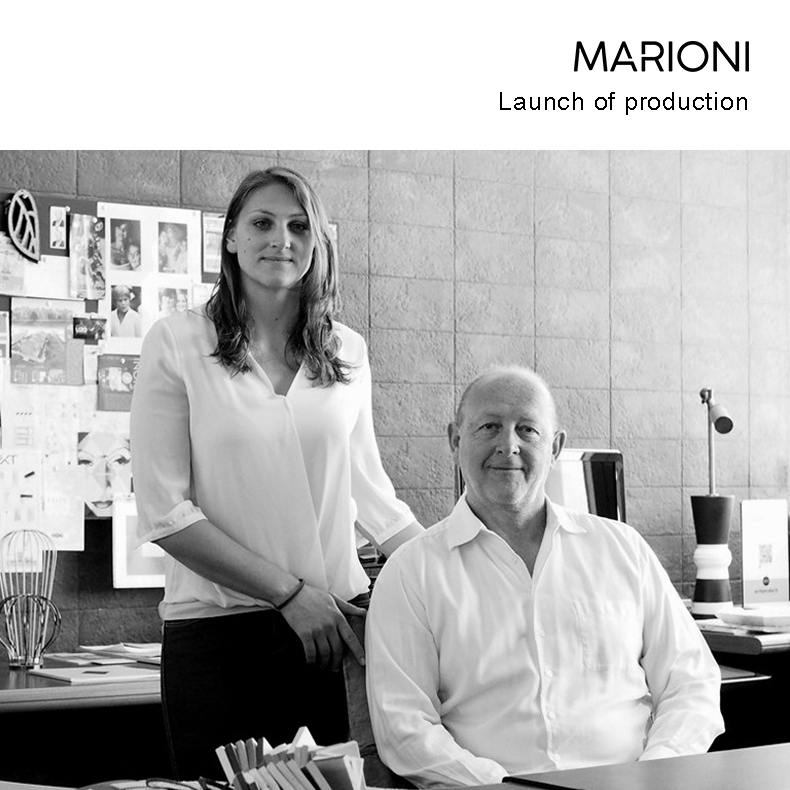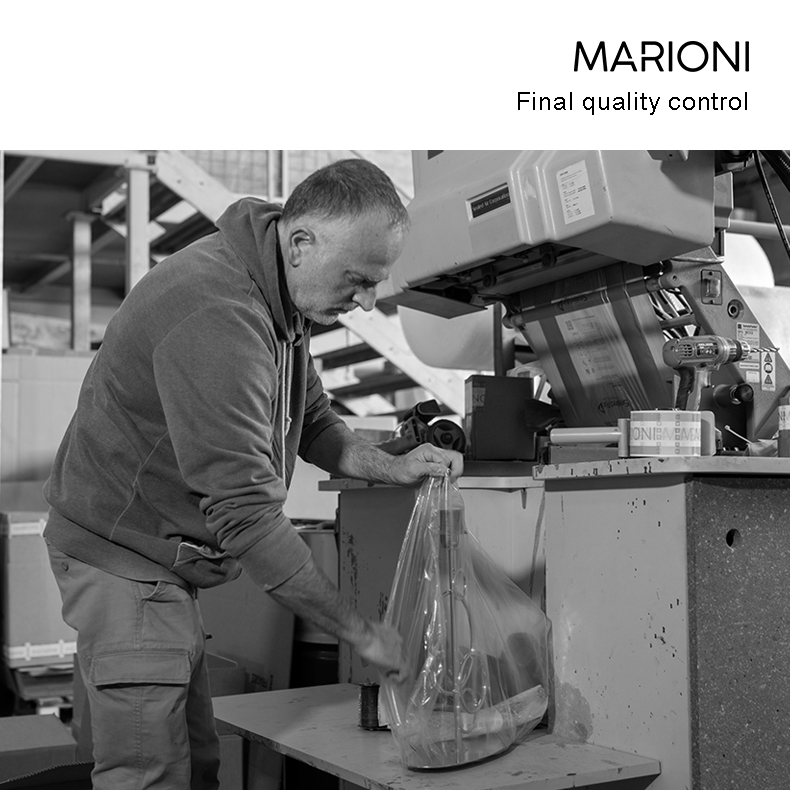Corimeu - Bowl
Accessories
Like a heart that is open to life, the bowl Corimeu is a very unique item, handmade, embellished with iridescent shades of glaze.
Each object of the Notorious collection is cared for in the smallest detail and made with typically Italian skill and mastery. Compliance with internal production processes certified according to ISO 9001-2015 standards guarantees its absolute quality.
Product sheet 
| Product code | 02274 |
| Dimensions | h.33x38x23 cm |
| Weight | 2,80 Kg |

Notarization: Corimeu - Bowl
Blockchain: etherna-mainnet
Registration date: 4/27/2023 12:13:51 PM
Address explorer: 0x7D02D8fd1494e3188597B13f6b709A20D6F79D83
Notarization hash SHA256 encrypted:
Notarization JSON data:
Verify notarization
On Explorer The production stages
The production stages
-
1/2 Launch of Production
From 7/29/2024 To 7/29/2024
MARIONI Via G.Giusti 199 - Calenzano (Calenzano) - Province of Firenze, Italy
For each product produced, a precise procedure is followed, which is outlined in the Quality Manual, as the company is certified to ISO 9001-2015. Specifications are defined at the order phase and the characteristics can be found on the Product Sheets, available on the website www.marioni.it.Every year, a third-party entity verifies compliance with internal procedures and monitors and evaluates the maintenance of company objectives.
After the launch into production, the system generates Mandates that are delivered to the Production Manager. In addition to the Mandates, Purchase Proposals are automatically created for the Supplier, which the Purchasing Department manages based on parameters such as: stock levels, minimum orders, minimum stock levels, etc. Depending on the collections and lines, there are different processing phases.
Checks during production
Each Department Manager coordinates and controls the work of the operators to ensure:
• the correct execution of Work and Control Instructions;
• the verification of the progress of the work to control that all items in the program have been produced and have passed all processing phases.
For us, quality and sustainability have always been company priorities.
All of our personnel are committed daily to complying with the highest quality and service standards. Lamps, furnishings, upholstered furniture and exclusive furniture, although entirely handmade with artisanal care, must still undergo the strictest stress tests and guarantee their performance over time.
Active and constant participation in Research and Development tenders, Internationalization and Digitalization at regional, national and European level confirms our commitment to continuous improvement of performance and collaboration with other partners in the Tuscan regional supply chain.
-
2/2 End of Process
From 9/30/2024 To 9/30/2024
MARIONI Via G.Giusti 199 - Calenzano (Calenzano) - Province of Firenze, Italy
Before wrapping and packaging, each product, whose compliance is guaranteed by the self-control system required by the ISO 9001-2015 standard, is always subjected to a series of final checks, the methods of which depend on the type of product.Our staff is suitably trained and qualified for this purpose. The implementation and results of production control are periodically checked by the Quality Manager using the following tools:
- Internal Audits
- Management of Non-Conformities
Sample surveys and analysis of data relating to the management of Non-Conformities found on the process/finished product are periodically carried out. This analysis may lead to requests for Corrective or Preventive Actions.
But the relationship with the client does not end with the shipment of the product. The history of the company is so full of personal experiences and human values that make it unique in its kind. The relationship that arises between the customer and our creative team goes beyond a simple supply, often resulting in a positive and continuous exchange of stimulating ideas and innovative proposals: a vision that makes Marioni emerge in the variegated Italian entrepreneurial landscape.
The adoption of socially responsible behaviour, monitoring and responding to everyone's economic and environmental expectations also achieves the goal of acquiring a competitive advantage. In fact, a product is not appreciated solely for its external or functional qualitative characteristics; its value is largely estimated for non-material characteristics, such as customization services, the image and finally the history of the product itself.
SUSTAINABILITY
Marioni is a family-run company, now in its third generation, and pursues a cultural and ecological mission alongside its commercial interests. Preserving our environment is expressed in every action performed and it is manifested in how our products are developed and manufactured. Marioni makes use of many different materials and the ongoing development of this material portfolio is a central focus of its sustainability efforts. In order to reduce the impact on the environment, Marioni is working intensively to replace all primary materials with recycled ones when it is possible.
With Legislative Decree 116/2020 which transposes the EU directives on waste, starting from 01/01/2023 all packaging are subject to the obligation of environmental labeling. Based on what is indicated in the Decision 97/129/EC regulation, the minimum information to be reported on the packaging are:
• Type of packaging: box, etc
• Material identification: alphanumeric identification coding.
• Reference material family: paper, plastic, etc. and the indication of the type of collection.
More information here
https://www.marioni.it/pdf/Sostenibilita%20-%20Sustainability.pdf
PREVIOUS PHASES
02_CLAY PROCESSING
Ceramics involve processes that have been handed down over time and have not undergone substantial changes over the years. We use terracotta (clay that contains additives and fluidizers) as our raw material, which is soft and porous. It can be processed by casting or pressing.
Casting
In this modeling technique, a plaster mold is prepared that replicates the object that is to be reproduced in negative. Clay is then poured into the mold, and after an appropriate amount of time during which the plaster provides sufficient thickness to the object by absorbing the water content, the excess material is poured off and the object is allowed to harden. It is then extracted from the mold and finished by hand.
Pressing
Another technique is called pressing, where harder clay is used and two mold matrices are prepared, one male and the other female. The molds are mounted on a press, placing them facing each other with a sufficient layer of clay to shape the object. At that point, the equipment is activated and the two surfaces come together, shaping the clay.
The next phase is Drying
Regardless of the technique used, it is necessary for the clay objects to dry completely in the air. This phase requires particular care. Even and uniform drying ensures durability of the finished object and especially the consistency of its shape. Uneven drying can cause deformations. Only after this phase can the firing process begin. Drying allows the object to lose its residual moisture and plasticity. Following drying, the product undergoes a 1% reduction in volume.
Firing
After the delicate drying phase, the firing process begins. This takes place in specialized kilns powered by natural gas or electricity, which reach temperatures of around 1050°C. The process takes approximately 8 hours to rise and 8 hours to cool down. It is necessary for the temperature to follow gradual and predetermined growth and decline curves. Once the product is extracted from the firing chamber, it is ready for further processing.
08_CLAY GLAZING
Our company was established in 1966 with the production of glazed clay artifacts, so we have extensive experience in this process. There are many ways to glaze ceramics, depending on the desired result and the firing to which the piece will be subjected. Two types of raw materials can be used:
- Crystalline glazes, glassy coatings that are waterproof and glossy. Usually transparent, they reveal the underlying clay.
- Enamel glazes. Always glassy but unlike crystalline glazes, they are not transparent, but opaque. The purpose of glazing a ceramic piece is to protect it from wear, facilitate cleaning and maintenance, and decorate it.
Glazing can be done with different techniques, including:
- Airbrush glazing
- Dip glazing
Objects subjected to glazing must undergo a second firing to fix the colors. This firing takes place in an oven at a temperature between 930 and 970 °C, depending on the flux used in the glaze, and always below the temperature used for the first firing. This second firing will vitrify the glazes or crystalline glazes, making the artifacts glossy and waterproof. Currently, we can offer a wide range of finishes, including 32 enamel glazes and 18 crystalline glazes. Upon request and with a minimum charge, we can also produce custom colors for specific projects.
09_HANDMADE CERAMIC DECORATION
The ceramic can be decorated both on an unfired glaze and on an already fired surface.
In the first case, colors are usually brushed over to reproduce geometric or abstract effects that give the product richness and exclusivity. Once the object has been glazed, we proceed with the decoration with ceramic colors because they must resist very high temperatures during the final firing. The colors are obtained from various metal oxides, earths and minerals. For example, green hues come from copper oxide, yellow hues from iron oxide, as well as cobalt oxide needed to produce blues and manganese oxide for browns. On the market these colors are found in the form of powders which must then be diluted with water according to the intensity you want to obtain. When decorating with a brush, you must always pay attention to the pressure you apply and the density of the colour. Once the process is finished, it is fired at temperatures between 930°C and 970°C.
In the second case, precious metals can be applied (such as gold or liquid platinum). This process requires a subsequent firing with temperatures around 750°C. Each passage in the kiln increases the value of the product and increases its production cost.

Notarization: Launch of Production
Blockchain: etherna-mainnet
Registration date: 9/30/2024 1:09:34 PM
Address explorer: 0x30D3E568C6d4Ea43d823675c8c544A141cc65e0e
Notarization hash SHA256 encrypted:
Notarization JSON data:
Verify notarization
On Explorer
Notarization: End of Process
Blockchain: etherna-mainnet
Registration date: 9/30/2024 1:10:25 PM
Address explorer: 0x30D3E568C6d4Ea43d823675c8c544A141cc65e0e
Notarization hash SHA256 encrypted:
Notarization JSON data:
Verify notarization
On Explorer

